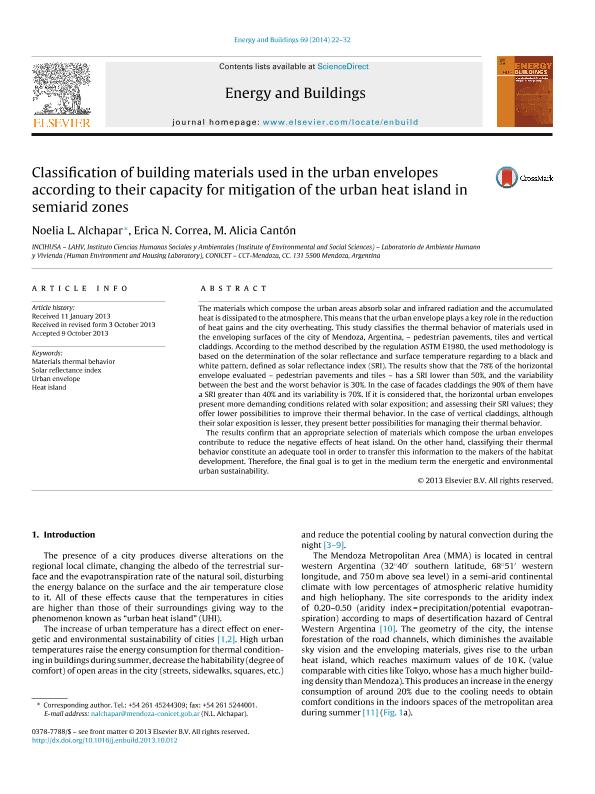Artículo
Classification of building materials used in the urban envelopes according their capacity for mitigation the urban heat island in semiarid zones
Fecha de publicación:
02/2014
Editorial:
Elsevier Science Sa
Revista:
Energy And Buildings
ISSN:
0378-7788
Idioma:
Inglés
Tipo de recurso:
Artículo publicado
Clasificación temática:
Resumen
The materials which compose the urban areas absorb solar and infrared radiation and the accumulated heat is dissipated to the atmosphere. This means that the urban envelope plays a key role in the reduction of heat gains and the city overheating. This study classifies the thermal behavior of materials used in the enveloping surfaces of the city of Mendoza, Argentina, – pedestrian pavements, tiles and vertical claddings. According to the method described by the regulation ASTM E1980, the used methodology is based on the determination of the solar reflectance and surface temperature regarding to a black and white pattern, defined as solar reflectance index (SRI). The results show that the 78% of the horizontal envelope evaluated – pedestrian pavements and tiles – has a SRI lower than 50%, and the variability between the best and the worst behavior is 30%. In the case of facades claddings the 90% of them have a SRI greater than 40% and its variability is 70%. If it is considered that, the horizontal urban envelopes present more demanding conditions related with solar exposition; and assessing their SRI values; they offer lower possibilities to improve their thermal behavior. In the case of vertical claddings, although their solar exposition is lesser, they present better possibilities for managing their thermal behavior.
The results confirm that an appropriate selection of materials which compose the urban envelopes contribute to reduce the negative effects of heat island. On the other hand, classifying their thermal behavior constitute an adequate tool in order to transfer this information to the makers of the habitat development. Therefore, the final goal is to get in the medium term the energetic and environmental urban sustainability.
Archivos asociados
Licencia
Identificadores
Colecciones
Articulos(INCIHUSA)
Articulos de INST. DE CS. HUMANAS, SOC. Y AMBIENTALES
Articulos de INST. DE CS. HUMANAS, SOC. Y AMBIENTALES
Citación
Alchapar, Noelia Liliana; Correa Cantaloube, Erica Norma; Canton, Maria Alicia; Classification of building materials used in the urban envelopes according their capacity for mitigation the urban heat island in semiarid zones; Elsevier Science Sa; Energy And Buildings; 69; 2-2014; 22-32
Compartir
Altmétricas




